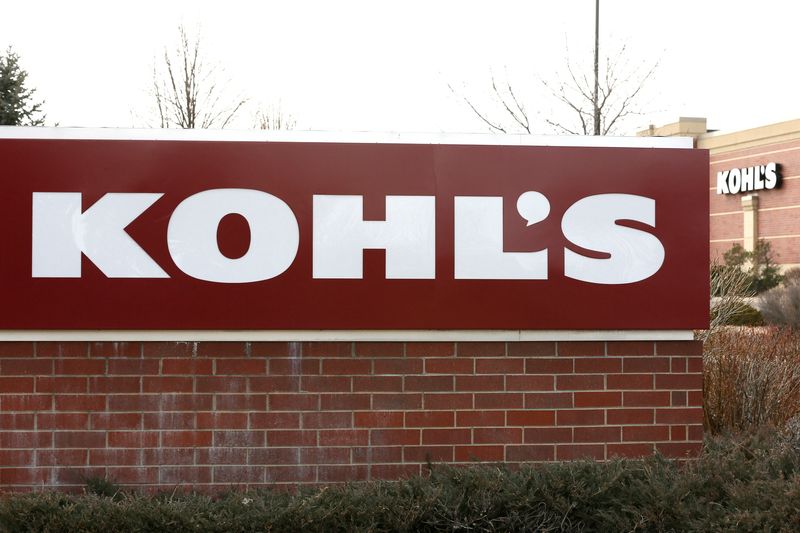Kohl’s slashes 2022 forecasts as inflation squeezes demand
2022.08.18 15:22

FILE PHOTO: The sign outside a Kohl’s store is seen in Broomfield, Colorado February 27, 2014. REUTERS/Rick Wilking/File Photo
(Reuters) -Kohl’s Corp cut its full-year sales and profit forecasts on Thursday, squeezed by steeper discounts and higher costs amid dwindling demand for clothing and shoes in the face of high inflation.
Shares in the U.S. department store chain slumped 7% in premarket trading, as it joined a host of retailers including Target Corp (NYSE:TGT) and Best Buy Co (NYSE:BBY) to warn of a profit squeeze for the year.
Decades-high inflation, although now easing, has made Americans more wary of opening their wallets to clothing, shoes and other non-essentials, pressuring demand at retailers and leaving them with bloated inventories.
Excess stocks have forced retailers to offload inventories through steep discounts and clearance sales heading into the key back-to-school season, with Kohl’s (NYSE:KSS) offering up to 80% discounts on its website, setting up for more margin pain in the next few months.
“(The year) 2022 has turned out to be more challenging than initially expected,” Chief Executive Officer Michelle Gass said in a statement.
While a return to offices and social events coupled with a resilient high-income consumer have buoyed sales of dressy, high-end fashion, Kohl’s, which leans toward more casual styles and caters to middle to low-income customers, is taking a bigger hit.
Menomonee Falls, Wisconsin-based Kohl’s now expects 2022 earnings per share of $2.80 to $3.20, down from the $6.45 to $6.85 range estimated previously. Analysts on average expect a profit of $4.06 per share, according to Refinitiv data.
Kohl’s, which last month called off its sale to Franchise Group (NASDAQ:FRG) citing a market downturn and tough financing conditions, also projected 2022 net sales to fall between 5% and 6%, compared with its previous forecast of flat to 1% growth.
Net sales in the second quarter fell 8.5% to $3.86 billion, edging past what analysts have called a lowered bar of $3.85 billion.








